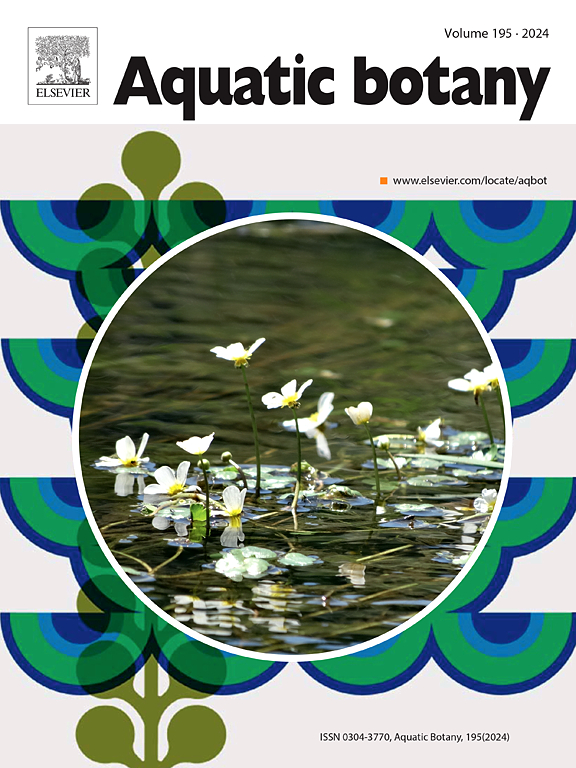利用分子系统发育分析评估水生植物起源的时间和生物地理
IF 2.6
4区 生物学
Q2 MARINE & FRESHWATER BIOLOGY
引用次数: 0
摘要
水生植物种类繁多,分布广泛,是趋同进化最深刻的例子之一。虽然它们作为分离的谱系被很好地理解,但在世界范围内对所有水生植物物种的综合合成很少。近年来,丰富的分子、形态和生物地理数据的积累,以及相关的分析方法,为水生植物进化的广泛研究提供了机会。目前的研究利用现有的数据来评估被子植物的系统发育关系,重点关注一个或多个水生物种的谱系,并重建成为水生谱系的祖先时间和生物地理。据估计,有604个独立的水生习性起源,产生了3427个现存的水生物种。相对于陆生被子植物的多样化率,水生起源的频率在几个时期内明显增加。水生植物物种最常见的表现为超水(突生)生长形式,这是大多数现存物种的特征,可能代表了大多数水生谱系的共同祖先习惯。讨论了当前研究的潜在局限性,包括数据质量,祖先生物地理学和年代测定方法,以及与水生植物定义相关的不确定性。本研究为今后水生植物的进化研究和水生植物生长形态分类奠定了基础。本文章由计算机程序翻译,如有差异,请以英文原文为准。
Using molecular phylogenetic analyses to assess the timing and biogeography of aquatic plant origins
Aquatic plants are diverse and widespread, representing one of the most profound examples of convergent evolution. Although they are fairly well understood as lineages in isolation, there have been few comprehensive syntheses of all aquatic plant species worldwide. The opportunity for a broad study of aquatic plant evolution has been enabled by the accumulation of abundant molecular, morphological, and biogeographical data in recent years, as well as associated analysis methods. The current study utilizes available data to evaluate angiosperm phylogenetic relationships, focusing on lineages with one or more aquatic species, and to reconstruct the ancestral timing and biogeography of lineages that became aquatic. It was estimated that there were 604 independent origins of the aquatic habit, resulting in 3427 extant aquatic species. The frequency of aquatic origins apparently increased over several time periods, relative to the diversification rate of terrestrial angiosperms. Aquatic plant species most commonly exhibit the hyperhydrate (emergent) growth form, which characterizes the majority of extant species and likely represents a common ancestral habit for most aquatic lineages. Potential limitations of the current study are discussed, including data quality, ancestral biogeography and dating methods, and the uncertainty associated with defining aquatic plants. This study should serve as a foundation for future research into aquatic plant evolution and the development of a phylogenetically informed growth form classification for aquatic plants.
求助全文
通过发布文献求助,成功后即可免费获取论文全文。
去求助
来源期刊

Aquatic Botany
生物-海洋与淡水生物学
CiteScore
3.80
自引率
5.60%
发文量
70
审稿时长
6 months
期刊介绍:
Aquatic Botany offers a platform for papers relevant to a broad international readership on fundamental and applied aspects of marine and freshwater macroscopic plants in a context of ecology or environmental biology. This includes molecular, biochemical and physiological aspects of macroscopic aquatic plants as well as the classification, structure, function, dynamics and ecological interactions in plant-dominated aquatic communities and ecosystems. It is an outlet for papers dealing with research on the consequences of disturbance and stressors (e.g. environmental fluctuations and climate change, pollution, grazing and pathogens), use and management of aquatic plants (plant production and decomposition, commercial harvest, plant control) and the conservation of aquatic plant communities (breeding, transplantation and restoration). Specialized publications on certain rare taxa or papers on aquatic macroscopic plants from under-represented regions in the world can also find their place, subject to editor evaluation. Studies on fungi or microalgae will remain outside the scope of Aquatic Botany.
 求助内容:
求助内容: 应助结果提醒方式:
应助结果提醒方式:


